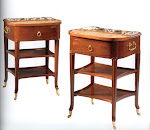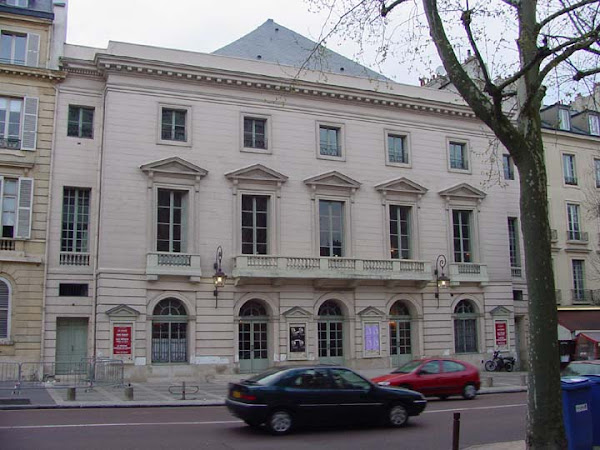
The voyeuse is for a clearly more mundane purpose! It was a chair on which a gentleman or lady would, in fact kneel casually while taking in a card game in which he or she was not directly actively taking part as a player. The chair was usually positioned with its back facing towards the players and the gaming table in the periphery of the gaming activity. One thing should be made clear here as it's often believed incorrectly to be the case. A voyeuse was not occupied by the card players at the table with the spectator leaning over the player on the padded chair rail which is the principal feature that distinguishes the voyeuse from an ordinary side chair or dining chair. Below in the photo I took at Versailles this past month, you can see a good example of a standard voyeuse chair by Claude Sené in Louis XVI's private dining room in the royal chateau in his Petits Apartments. As in most examples it has an upholstered back surmounted by the required padded chair rail on which the occupant rests his or her forearms.

Many voyeuses are scarcely distinguishable from a side chair in either the Louis XV or Louis XVI periods. However it's obvious this seating form reached it's apogee of beauty under the later reign when it was often characterized by superb and delicate carved decoration on an open back with a lyre motif! Not surprisingly, Georges Jacob and some of his contemporaries like Henri Jacob or Martin Jullien made a specialty of such voyeuses with a lyre motif on the back.
A fine example is seen here. It was offered at Christie's Paris in December of 2007 as lot 92 in the sensational auction of the excess inventory of the legendary Parisian antiquaire Bernard and Benjamin Steinitz. This example is stamped by Jullien. We can only hope the winner of this charming voyeuse at this stellar auction has taken great care to show it the respect it deserves and has upholstered it in something lovely, appropriate and stunning by the likes of Scalamandré!



















